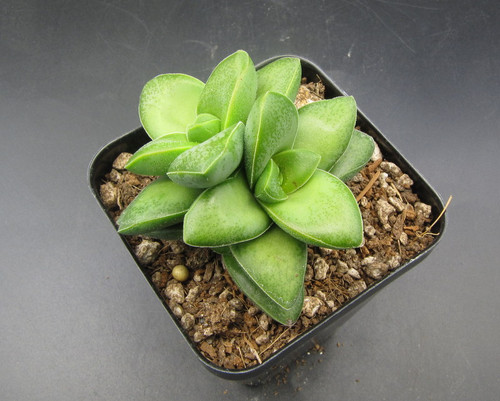Pot Size: 3.5"
Accepted Scientific Name: Crassula orbicularis v. rosularis
Origin and Habitat:
Crassula orbicularis v. rosularis is native to South Africa, where it thrives in rocky outcrops and well-draining soils. This species is typically found in semi-arid regions with seasonal rainfall, allowing it to adapt to prolonged dry periods. It grows in shaded to partially sunny areas, often under shrubs or alongside other succulents. Its natural habitat provides the perfect balance of drainage and moisture retention, essential for its survival in variable climatic conditions.
Description:
Crassula orbicularis v. rosularis is a small, rosette-forming succulent reaching about 4 to 6 inches in diameter. Its fleshy, rounded leaves form a compact, low-growing cluster, displaying a vibrant green hue with reddish margins under bright light. The plant produces delicate, tubular flowers in pale pink to white, emerging on slender, upright stalks during the blooming season. Its dense, ground-hugging growth habit makes it an excellent addition to rock gardens and container arrangements.
Cultivation:
Zone: USDA hardiness zones 9-11.
Temperature: Thrives in 10-30°C, tolerates brief dips to 5°C but should be protected from frost.
Growth Rate: Moderate.
Soil: Requires well-draining soil with pumice to prevent root rot and enhance aeration.
Watering: Water sparingly, allowing the soil to dry completely between waterings to prevent overwatering issues.
Fertilizing: Feed every 2-3 weeks during the growing season with a diluted, balanced fertilizer.
Light: Prefers bright, indirect light to partial sun; stronger light enhances leaf coloration.
Pests and Diseases: Generally pest-resistant but may attract mealybugs and aphids. Overwatering can lead to fungal infections and root rot.
Propagation:
Easily propagated from leaf or stem cuttings, which root quickly in well-draining soil. Offsets can also be separated and replanted. Seeds may be used, though they require warm temperatures and consistent moisture for germination.







